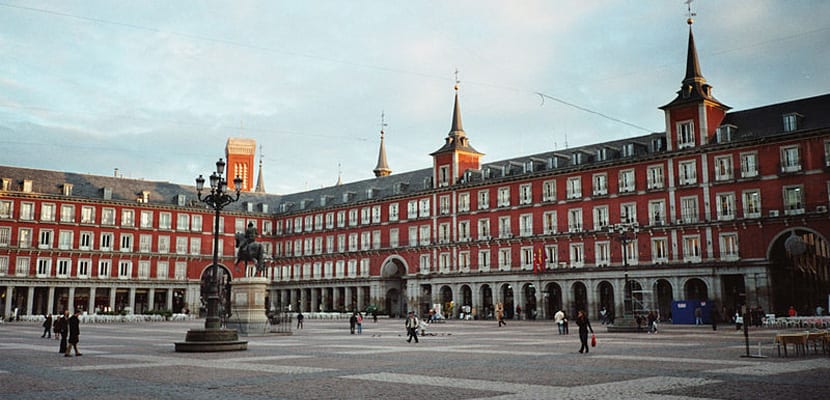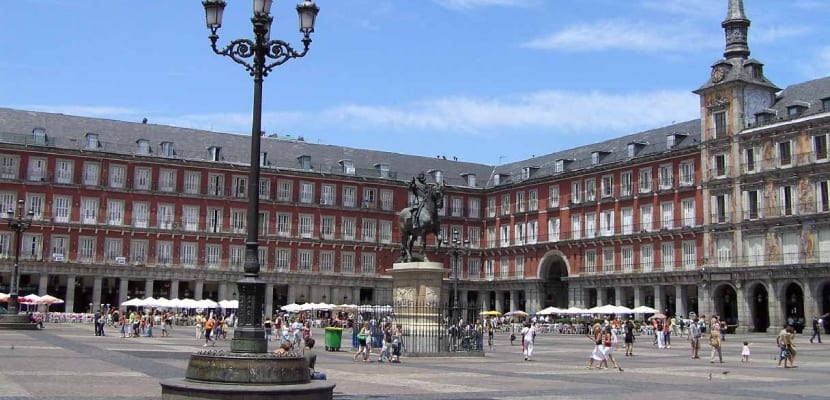
On the occasion of the 400th anniversary of the Plaza Mayor in Madrid, the city council of the capital has prepared for the occasion an interesting cultural agenda and special lighting to further embellish this important monument of the city and to surprise all who visit it.
Despite having been burned on three occasions, kings and commoners have passed through it and throughout its existence it has witnessed events of various kinds such as bullfighting shows and tournaments, religious festivals, military confrontations and even executions.
If you plan to travel to Madrid during 2017, then we take a tour of its history to get to know it better and enjoy it much more when the day comes.
History of the Plaza Mayor in Madrid

Today it is one of the most emblematic places in Madrid, but originally it was a square located on the outskirts of the walled city. It was known as Plaza del Arrabal and many merchants came to sell their cheaper products, so it was always a very frequented place by Madrid people.
Towards the middle of the XNUMXth century, it was granted the privilege of holding a monthly fair and over time it acquired a more urban aspect when some houses were built around it. When, at the end of that same century, Felipe II moved the court to Madrid, it was necessary to create an authentic Plaza Mayor given the popularity of this place and the relevance that the city took. The king entrusted the architect Juan de Herrera with the project, who conceived it as a rectangle 152 meters long by 94 meters wide.
Here the different existing guilds met to sell their products and for this they were distributed to all corners of the Plaza Mayor giving their name, in this way, to the Casa de la Carnicería, the Casa de la Panadería, the Arco de Cuchilleros, etc.
It took only two years and around 900.000 ducats to build it, but its construction marked an architectural milestone in the city., being the largest public space in Madrid that could be seen from anywhere in the city. In addition, it soon began to host various types of events such as popular shows, tournaments, processions and beatifications, public executions, etc.
It was burned 3 times

The Plaza Mayor suffered three major fires throughout its history in 1631, 1672 and 1790. The latter completely destroyed it and had to be totally rebuilt. The works ended in the XNUMXth century, putting in its central space a French-style garden and an equestrian statue of Felipe III.
Shows held in the Plaza Mayor
Given the size of the square and its enormous popularity, it soon began to be used as a meeting place for the population and as a setting for certain public events. Some of them were the following.
Leisure
- Bullfighting: bullfighting events were held in the Plaza Mayor until the middle of the XNUMXth century, when events stopped taking place.
- Tournaments: tournaments were also held where the knights demonstrated their skills with hair and spears.
- Fireworks and other events: the Plaza Mayor was the scene of poetic jousts and pyrotechnic shows.
- Carnivals: the masked balls took place in the main square but during the reign of Carlos III they were eliminated.
Religious
- Sacramental cars and religious festivals: in the Plaza Mayor there were several beatifications and canonizations of Spanish saints. Short plays and autos sacramentals were also performed.
- Autos de Fe: it was an act organized by the Inquisition in which those convicted by the court showed their repentance for their sins to reconcile with the Catholic Church. It was done publicly so that they would serve as a lesson to all the faithful who had gathered in the square.

Panoramic of the Plaza Mayor in Madrid
Plaza Mayor style
Due to the destructive fire that it suffered at the end of the XNUMXth century, the architect Juan de Villanueva had to rebuild it and gave it a certain neoclassical air that was so fashionable at that time. Much later, ornamental changes were made in the Plaza Mayor, especially in the Casa de la Panadería where some mythological wall paintings by the artist Carlos Franco were captured.
Likewise, works were also carried out on the houses, the dormers were ordered and the slate roofs were recovered. The landscaped areas disappeared and towards the 70s of the XNUMXth century the current paving was made and an underground parking lot was created.
Celebrations for the 400th anniversary

Image via Relatarte
To commemorate such an important date, the city council of the capital presented a program full of activities aimed at all audiences. Among the most outstanding are a masked ball that will take place on February 25 during the Carnivals. But also the San Isidro Festivities, the Veranos de la Villa cycle, the Jazz Festival and the Christmas festivities.
In addition, the Teatro Real and the Teatro de la Zarzuela have scheduled various shows that will be broadcast in the Plaza Mayor as a very special concert performed by Plácido Domingo. Fifty films will also be screened in which the Plaza Mayor has been an important setting
There will be shows programmed by the Teatro Real, with the broadcast of a special concert by Plácido Domingo, and by the Teatro de la Zarzuela. 50 films in which the Plaza Mayor has been an important setting such as 'La gran familia' (1962) will also be screened.